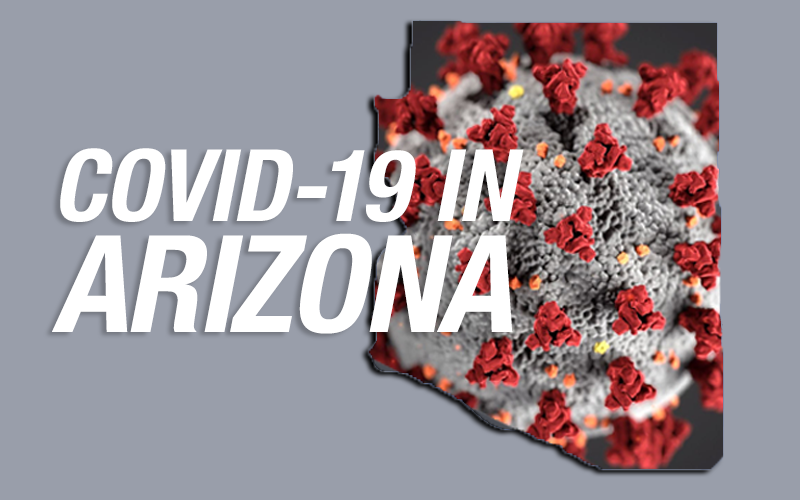
Coconino County officials have set up drive-thru testing for the novel coronavirus of people who have a referral from their doctor. (Photo courtesy Coconino County Health and Human Services)
WASHINGTON – Arizona did relatively well in a new study of social distancing, but the same could not be said of how well most counties in the state follow the practice, which is considered key to stemming the spread of novel coronavirus.
Arizona was one of 21 states to earn a B in the national report card by data and analytics firm Unacast, which said travel in the state fell 36% last week from the week before.
Less movement meant more social distancing in the report, which used publicly available location data from cellphones to compare people’s movements from one week with the next.
But most of the state’s drop came in Maricopa County, the only county to earn an A. Nine of the state’s 15 counties were graded D or F.
Officials in those counties, however, said they are confident their residents are engaged in healthy practices. They also said the report should be taken with a grain of salt because it does not account for the distances that need to be covered in rural counties – or the fact that someone might be driving to get tested for COVID-19, the disease caused by the coronavirus.
“We are aggressively testing,” said Marie Peoples, deputy manager of Coconino County, which got an F in the Unacast report. “We are the first in the state to offer the two drive-thru assessments.”
Peoples said she was not aware of the report, or her county’s rating, but reiterated that county officials continue to “stress the importance of following social distancing guidelines” across all media.
Health officials from the state to the White House to the Red Cross have recommended social distancing as a simple but effective way to stem the spread of the coronavirus, by avoiding large gatherings and trying to stay at least 6 feet from others when in public.
Unacast CEO and co-founder Thomas Walle said in a statement with the Social Distancing Scoreboard that the report was released to raise awareness about the importance of social distancing and to “guide critical decision making and planning” by public officials.
“Our COVID-19 toolkit will empower organizations to unearth reliable and valuable information to guide critical decision making and planning in relation to COVID-19 containment,” Walle’s statement said. “We created the Social Distancing Scoreboard as the first of many tools to help organizations and businesses better understand public behavior in a post-COVID-19 world.”
But local health officials said they do not need the scorecard to understand how their residents are behaving. They said they see the evidence firsthand.
Navajo County got an F in the Unacast report, but a spokesperson with the county’s public health department said she found it hard to believe that there is that much traveling going on in the county right now.
“I know our national park in Navajo County has closed. A lot of the tourist attractions on the Navajo Nation are closing and asking people not to come,” she said. “So as far as travel, I know that efforts are being made there.”
Arizona Public Health Association Executive Director Will Humble said health officials around the state deserve credit for their persistence and alertness to the disease. He pointed to the discovery early in the crisis of a confirmed case in an affiliate of Arizona State University, one of the first confirmed cases in the country.
Humble said Arizona “got lucky” in that case, because the patient was returning from a trip to China and showing symptoms of the infections. He thinks that early catch gave officials extra time to stop the state from suffering an outbreak like the one that occurred in Washington.
“I think what happened in Seattle, that was just bad luck in part,” Humble said. “Someone missed a diagnosis, that’s true. But I believe that initial case was asymptomatic.
“If our travel case from China would have been an asymptomatic case, we would have missed it too,” he said. “And there could have been community spread that started just like it did in Washington.”
Although Maricopa got the only A in the report, it has also been hardest hit by the disease, simply because of the county’s sheer size. The rural counties that got poor grades in the report have accounted for only a handful of the state’s confirmed cases.
But Peoples said more confirmed cases is not a bad thing – it shows that officials are getting a better handle on the disease. She said she expects confirmed cases in Coconino County to continue to grow because of the number of tests being conducted there.
“The fact that we are seeing positives should not be seen as a negative,” she said. “It needs to be seen as we were aggressively looking at it and that we were proactive.”


